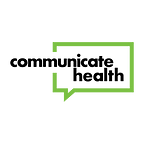Useful Theory: Theory of Planned Behavior
Change is never easy — and convincing other people to change their behavior can be harder still. Plain language and good design are key, but health communicators also need to know what levers to pull to motivate their audiences to make a change.
Fortunately, smarty-pants academics are forever hard at work developing models and theories that help us understand how and why people change their behavior. Previously in our Useful Theory series, we checked out the Stages of Change. Today, we’re exploring Icek Ajzen’s Theory of Planned Behavior.
The gist of this theory is that a person’s intent to do a behavior depends on the answers to 3 main questions:
- What do I think will happen if I do this behavior? How likely is a good outcome versus a bad one? (Behavioral beliefs)
- What do others think about this behavior? Do other people expect me to do it? How much do I care about their opinions? (Normative beliefs)
- Do I think I can realistically do it? What’s going to make it easier or harder for me? (Control beliefs)
Let’s say you’re trying to convince your audience to quit smoking. Talking about the harmful health effects of smoking might work — but what if your audience’s main concern is that all their friends do it and think it’s cool? In that case, messages about social norms may be more effective than messages about the health risks.
Or say you want to convince people to get a COVID-19 vaccine. You could try influencing all 3 types of beliefs by stressing that:
- COVID-19 vaccines are safe and effective, to influence behavioral beliefs
- Millions of people have already been vaccinated, to influence normative beliefs
- Getting vaccinated is quick and easy, to influence control beliefs
Of course, that last message will only work if it is, in fact, quick and easy to get vaccinated! The Theory of Planned Behavior predicts intent, but intentions are useless without real-world opportunity and access.
So as you develop your health content, think about how your audience might answer the 3 questions. (Or, better yet, do some user testing and find out for yourself!) By addressing likely concerns — and backing up your messaging with interventions to make health behaviors easy and accessible — you can empower your audience to make positive, healthy changes.
The bottom line: If you want to help your audiences change their behavior, figure out what beliefs might be holding them back.
